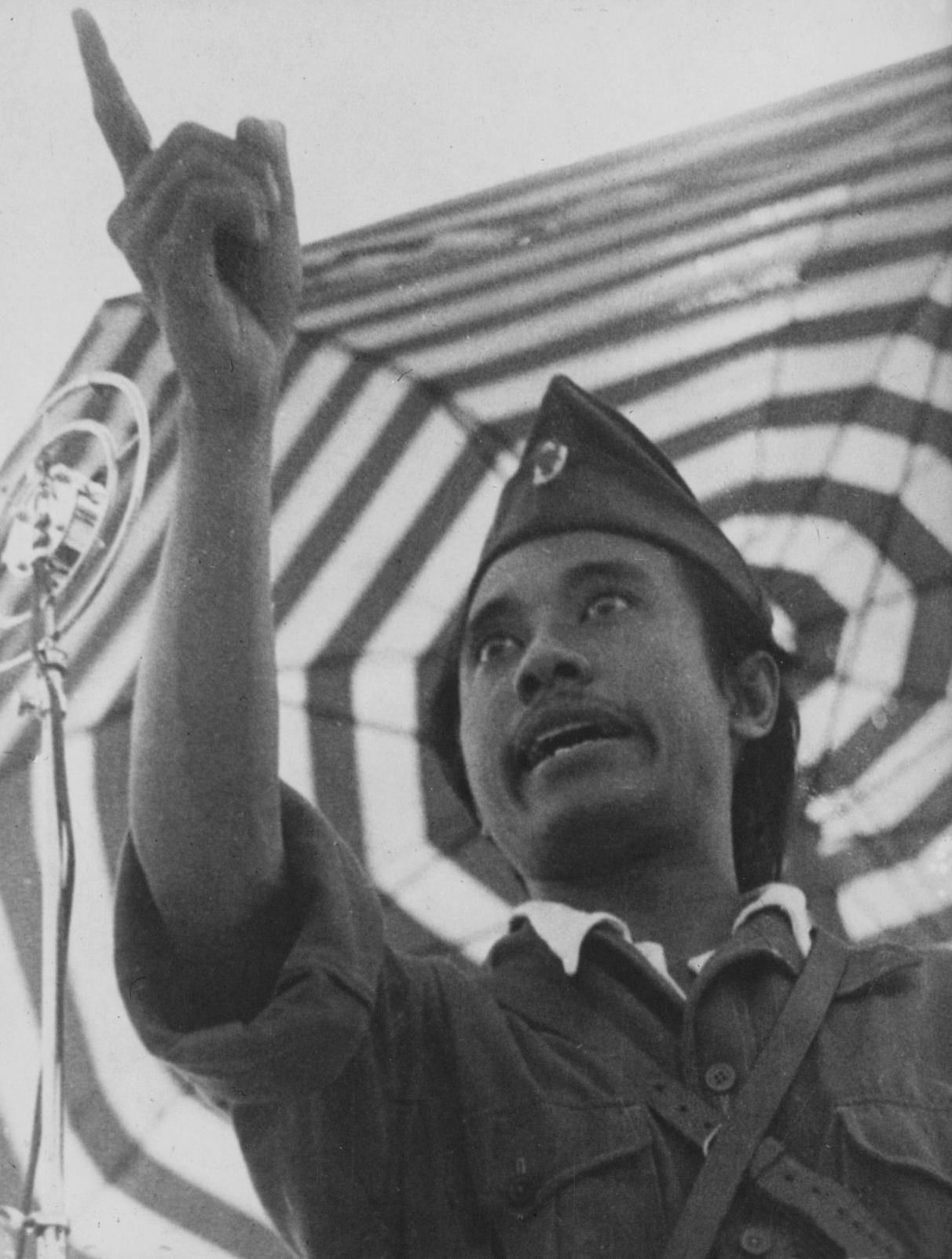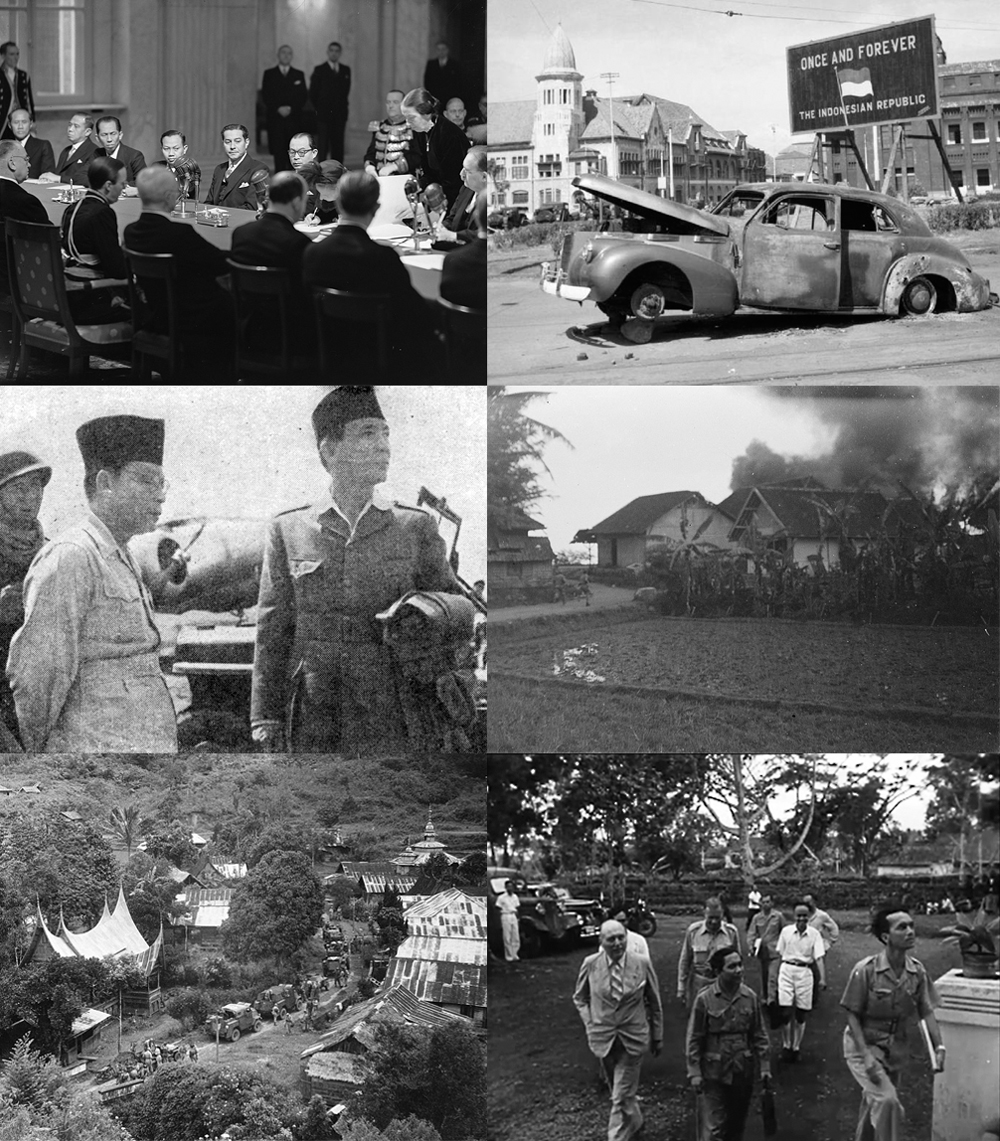|
Ayik Umar Said
André AumarsUmar Said's legal name as he was a French naturalised citizen. (26 October 1928 – 8 October 2011), born Ayik Umar Said, was an Indonesian-born French journalist and activist. Umar Said is best known for his contributions to the Indonesian delegation at the Tricontinental Conference in Cuba in 1966 and his political writings against the reign of Sukarno of the mid-1960s and on the 30 September Movement, and to the Parisian cooperative restaurant ''Indonesia'' which acted as a political refuge during the 1990s. His journalistic contributions include those to ''Indonesia Raya'', ''Ekonomi Nasional'' in 1965 where he was editor-in-chief, ''Harian Rakjat'', and his own monthly ''Chine Express'' which detailed the actualities of Chinese politics during the 1980s and 90s. Biography Early life Umar Said was born on 26 October 1928, two days before the Youth Pledge, in a village called Tumpang in Pakis, Malang, East Java in the Dutch East Indies. His father, Hard ... [...More Info...] [...Related Items...] OR: [Wikipedia] [Google] [Baidu] |
Malang
Malang (; ) is a landlocked city in the Indonesian province of East Java. It has a history dating back to the age of Singhasari Kingdom. It is the second most populous city in the province, with a population of 820,043 at the 2010 Census and 843,810 at the 2020 Census.Badan Pusat Statistik, Jakarta, 2021. Its surrounding (the metropolitan area) is home to 3,663,691 inhabitants in 2010, spread across two cities and 22 districts (21 in Malang Regency and one in Pasuruan Regency). Malang is the third largest city by economy in East Java, after Surabaya and Kediri, with an estimated 2016 GDP at Rp. 44.30 trillion. The city is well known for its mild climate. During Dutch colonization, it was a popular destination for European residents. Even now, Malang still holds its position as a popular destination for international tourists. Malang keeps various historical relics. This city keeps relics of the Kingdom of Kanjuruhan period until the Dutch period. The existence of Dutch h ... [...More Info...] [...Related Items...] OR: [Wikipedia] [Google] [Baidu] |
Kediri (city)
Kediri (, ''Kutha Kadhiri'') is an Indonesian city, located near the Brantas River in the province of East Java on the island of Java. It covers an area of 63.40 km2 and had a population of 268,950 at the 2010 Census and 286,796 at the 2020 Census. It is one of two ' Daerah Tingkat II' that have the name 'Kediri' (the other is the Regency of Kediri, which surrounds the city). The city is administratively separated from the Regency, of which it was formerly the capital. Archaeological artefacts discovered in 2007 appeared to indicate that the region around Kediri may have been the location of the Kediri Kingdom, a Hindu kingdom in the 11th century. The city is a major trade centre for the Indonesian sugar and cigarette industry. Kediri is the second largest city by economy in East Java, after Surabaya, with a 2016 estimated GDP at Rp76.95 trillion. History Traditionally, the city of Kediri is said to have been founded on 27 July 879, and today the city's anniversary ... [...More Info...] [...Related Items...] OR: [Wikipedia] [Google] [Baidu] |
Wonokromo
Wonokromo is an administrative district (''kecamatan'') in the city of Surabaya, Indonesia. The Wonokromo railway station serves the area. The Kalimas River originally turned north and empties into the Tanjung Perak and Kali Jagir, a manmade branch of the river that connects east to the sea and includes a dam built by the Dutch. The area is also home to DTC (Darmo Trade Center) formerly the Wonokromo Market. Administrative divisions Wonokromo is divided into 6 administrative villages: * Ngagel * Ngagelrejo * Darmo * Sawunggaling * Wonokromo * Jagir Gallery File:COLLECTIE TROPENMUSEUM Bij de pasar van Wonokromo TMnr 60026777.jpg, Wonokromo Market circa 1930s File:COLLECTIE TROPENMUSEUM Benedenstrooms aanzicht van de bandjirsluis Wonokromo Java TMnr 10007871.jpg, Wonokromo Lock Lock(s) may refer to: Common meanings *Lock and key, a mechanical device used to secure items of importance *Lock (water navigation), a device for boats to transit between different levels of water ... [...More Info...] [...Related Items...] OR: [Wikipedia] [Google] [Baidu] |
Battle Of Surabaya
The Battle of Surabaya was fought between regular infantry and militia of the Indonesian nationalist movement and British and British Indian troops as a part of the Indonesian National Revolution against the re-imposition of Dutch colonial rule. The peak of the battle was in November 1945. The battle was the largest single battle of the revolution and became a national symbol of Indonesian resistance. Considered a heroic effort by Indonesians, the battle helped galvanise Indonesian and international support for Indonesian independence. 10 November is celebrated annually as Heroes' Day (). By the time the Allied forces arrived at the end of October 1945, the ''Pemuda'' ("youth") foothold in Surabaya City was described as "a strong unified fortress". Fighting broke out on 30 October after the British commander, Brigadier A. W. S. Mallaby was killed in a skirmish. The British retaliated with a co-ordinated sweep that began on 10 November, under the cover of air attacks. Alth ... [...More Info...] [...Related Items...] OR: [Wikipedia] [Google] [Baidu] |
Indonesian National Revolution
The Indonesian National Revolution, or the Indonesian War of Independence, was an armed conflict and diplomatic struggle between the Republic of Indonesia and the Dutch Empire and an internal social revolution during postwar and postcolonial Indonesia. It took place between Indonesia's declaration of independence in 1945 and the Netherlands' transfer of sovereignty over the Dutch East Indies to the Republic of the United States of Indonesia at the end of 1949. The four-year struggle involved sporadic but bloody armed conflict, internal Indonesian political and communal upheavals, and two major international diplomatic interventions. Dutch military forces (and, for a while, the forces of the World War II allies) were able to control the major towns, cities and industrial assets in Republican heartlands on Java and Sumatra but could not control the countryside. By 1949, international pressure on the Netherlands, the United States threatening to cut off all economic ai ... [...More Info...] [...Related Items...] OR: [Wikipedia] [Google] [Baidu] |
People's Security Agency
The People's Security Agency ( id, Badan Keamanan Rakyat), or commonly abbreviated as BKR, was an Indonesian government agency established to undertake the task of maintaining security together with the people and the state offices. The BKR was formed by the Preparatory Committee for Indonesian Independence (PPKI) in its session on 22 August 1945 and announced by President Sukarno on the next day. The establishment of the BKR was a change from the results of the PPKI session on 19 August 1945 that had previously planned the formation of the national army. The amendment was finally decided on 22 August 1945 not to form a national army. This decision is based on various political considerations. The leaders of the time chose to take more diplomacy to gain recognition of the newly proclaimed independence. The armed Japanese occupation troops, complete with falling mental defeat, became a consideration as well, to avoid clashes when a national army was immediately formed. Members of ... [...More Info...] [...Related Items...] OR: [Wikipedia] [Google] [Baidu] |
Adnan Kapau Gani
Adnan Kapau Gani (16 September 1905 – 23 December 1968), often abbreviated as A. K. Gani, was an Indonesian politician. Born in West Sumatra, he spent much of his youth in Java, where he studied medicine and became involved with the nascent nationalist movement before going to South Sumatra to work as a doctor. During the Indonesian National Revolution he served three terms as Minister of Welfare; two of these were concurrent with terms as a deputy prime minister. Afterwards Gani went to Palembang, South Sumatra, where he remained active in politics until his death. In November 2007 Gani was made a National Hero of Indonesia. Early life Gani was born in Palembajan, West Sumatra, west of Bukittinggi, on 16 September 1905. The son of a teacher, he finished his early studies in Bukittinggi in 1923 before going to Batavia (modern day Jakarta), first for his secondary studies and then to study medicine. He graduated from STOVIA ( nl, School tot Opleiding van Indische Artsen) ... [...More Info...] [...Related Items...] OR: [Wikipedia] [Google] [Baidu] |
Palembang
Palembang () is the capital city of the Indonesian province of South Sumatra. The city proper covers on both banks of the Musi River on the eastern lowland of southern Sumatra. It had a population of 1,668,848 at the 2020 Census. Palembang is the second most populous city in Sumatra, after Medan, and the ninth most populous city in Indonesia. The Palembang metropolitan area has an estimated population of more than 3.5 million in 2015. It comprises parts of regencies surrounding the city, including Banyuasin, Ogan Ilir, and Ogan Komering Ilir. Palembang is one of the oldest cities in Southeast Asia. It was the capital of Srivijaya, a Buddhist kingdom that ruled much of the western Indonesian Archipelago and controlled many maritime trade routes, including the Strait of Malacca. A Chinese monk, Yijing, wrote that he visited Srivijaya in the year 671 for 6 months. Palembang was incorporated into the Dutch East Indies in 1825 after the abolition of the Palembang S ... [...More Info...] [...Related Items...] OR: [Wikipedia] [Google] [Baidu] |
Sumatra
Sumatra is one of the Sunda Islands of western Indonesia. It is the largest island that is fully within Indonesian territory, as well as the sixth-largest island in the world at 473,481 km2 (182,812 mi.2), not including adjacent islands such as the Simeulue, Nias, Mentawai, Enggano, Riau Islands, Bangka Belitung and Krakatoa archipelago. Sumatra is an elongated landmass spanning a diagonal northwest–southeast axis. The Indian Ocean borders the northwest, west, and southwest coasts of Sumatra, with the island chain of Simeulue, Nias, Mentawai, and Enggano off the western coast. In the northeast, the narrow Strait of Malacca separates the island from the Malay Peninsula, which is an extension of the Eurasian continent. In the southeast, the narrow Sunda Strait, containing the Krakatoa Archipelago, separates Sumatra from Java. The northern tip of Sumatra is near the Andaman Islands, while off the southeastern coast lie the islands of Bangka and Belitun ... [...More Info...] [...Related Items...] OR: [Wikipedia] [Google] [Baidu] |
Surabaya
Surabaya ( jv, ꦱꦸꦫꦧꦪ or jv, ꦯꦹꦫꦨꦪ; ; ) is the capital city of the Indonesian province of East Java and the second-largest city in Indonesia, after Jakarta. Located on the northeastern border of Java island, on the Madura Strait, it is one of the earliest port cities in Southeast Asia. According to the National Development Planning Agency, Surabaya is one of the four main central cities of Indonesia, alongside Jakarta, Medan, and Makassar. The city has a population of 2.87 million within its city limits at the 2020 census and 9.5 million in the extended Surabaya metropolitan area, making it the second-largest metropolitan area in Indonesia. The city was settled in the 10th century by the Kingdom of Janggala, one of the two Javanese kingdoms that was formed in 1045 when Airlangga abdicated his throne in favor of his two sons. In the late 15th and 16th centuries, Surabaya grew to be a duchy, a major political and military power as well ... [...More Info...] [...Related Items...] OR: [Wikipedia] [Google] [Baidu] |

.png)



